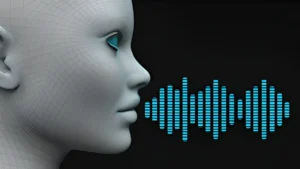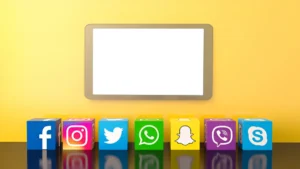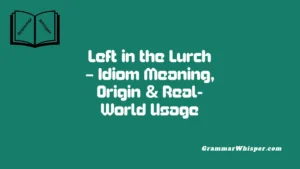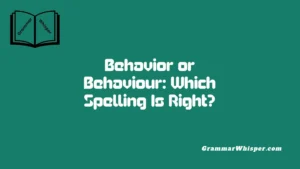When I first started learning American English, one of the trickiest things wasn’t the vocabulary – it was the phrases that sounded easy but carried more nuance than I expected. “Much better” was one of those. On the surface, it seemed like a simple phrase, but as I heard it in conversations, read it in emails, and saw it printed in marketing slogans, I realized how vital it was to break down its usage. In both formal and informal settings, this phrase shows up to express significant improvement, making it a real application of everyday communication. I even saw it used in client-facing marketing material to highlight a product update: “Now with a much better battery life!” That’s when I knew it was more than just a classroom example – it had real-world power.
Digging deeper into its grammar, I found it fascinating how “much better” fits naturally into so many sentence structures while remaining correct. It’s widely accepted, and not just in spoken communication – it’s also all over business emails and product slogans. As someone who’s helped others in refining their English, I always emphasize that mastering these “small” phrases avoids bigger pitfalls. They’re part of the rhythm of the language, and understanding everything from tone to structure helps learners get past sounding robotic. In the end, knowing when and how to use “much better” is less about rules and more about flow – something that’s best picked up by observing real usage and refining your ear over time.
What Does “Much Better” Actually Mean?
At its core, “much better” is a comparative phrase used to express a significant improvement or difference between two things.
Breakdown:
- “Much” = an intensifier, meaning “to a great extent”
- “Better” = the comparative form of “good”
Put together: “Much better” = considerably more good or improved than something else.
Examples:
- “I’m feeling much better today.”
- “This coffee tastes much better than yesterday’s.”
- “Your new website looks much better after the redesign.”
It adds strength to the comparison. Not just better – much better.
Grammar Behind “Much Better”
To understand why “much better” is correct, we have to dive into the grammar of comparative adjectives.
How Comparative Adjectives Work:
- They compare two or more things
- Most are formed by adding “-er” or using “more” before the adjective
- Example:
- Good → better
- Happy → happier
- Interesting → more interesting
What Role Does “Much” Play?
“Much” is a degree modifier. It tells us how much better something is. Other modifiers like this include:
- Far
- A lot
- Way
- Slightly
Correct Usage:
✅ “This version is much better.” ✅ “She feels much better now.”
Incorrect Usage:
❌ “This version is more better.” ❌ “She feels too much better.”
Let’s explore why.
“Much Better” vs. “More Better”
One of the most common mistakes is saying “more better” instead of “much better.” Though it might sound like stronger praise, it’s grammatically incorrect.
Why Is “More Better” Wrong?
It’s a case of redundant comparison. “Better” already implies more good, and “more” is unnecessary. In grammar terms, this is called a double comparative – and it’s not allowed in standard English.
Quick Comparison Table:
| Phrase | Correct? | Explanation |
| Much better | ✅ | Proper use of modifier + comparative |
| More better | ❌ | Double comparative; grammatically wrong |
| So much better | ✅ | Emphatic but acceptable in informal use |
| Too much better | ❌ | Illogical modifier combination |
Cultural Note:
“More better” does occasionally appear in humorous, ironic, or colloquial settings – especially in music lyrics or memes. It’s used knowingly for effect, not grammar.
Real-Life Usage: Where and How to Use “Much Better”
“Much better” is incredibly flexible in both speech and writing. Here’s how it shows up in real-world English:
Common Situations:
- Health & Wellness: “You look much better than yesterday.” “I’m feeling much better after resting.”
- Performance Review: “The second draft was much better than the first.” “You performed much better under pressure this time.”
- Product Comparisons: “This model is much better than the previous one.” “The camera quality is much better on this phone.”
Tone Matters:
“Much better” strikes a neutral to positive tone. It’s suitable in most settings unless extreme formality is required (which we’ll cover next).
When “Much Better” Is Preferable Over Just “Better”
You might wonder why we even need “much.” Isn’t “better” good enough?
The Role of Emphasis
“Better” is comparative – but “much better” communicates significant improvement or notable contrast.
Examples:
Basic Comparison
Enhanced Comparison with “Much”
You did better.
You did much better.
She looks better.
She looks much better.
It runs better.
It runs much better now.
Using “much” makes your sentence stronger, clearer, and more impactful.
Formal vs. Informal Settings: Does “Much Better” Fit Both?
Yes – but how you use it depends on the tone and audience.
Informal:
- Conversations
- Texts
- Internal team chats
Example: “I feel much better after that nap.”
Formal:
- Business emails
- Academic writing
- Professional reports
In formal settings, “much better” is often replaced with alternatives like:
- “Improved”
- “Enhanced”
- “Significantly better”
Example Rewrites:
- Informal: “The process is much better now.”
- Formal: “The process has significantly improved.”
Tip: When in doubt, assess your audience and your intent. Tone drives choice.
Smarter Alternatives to “Much Better”
Especially in professional writing, it’s useful to know alternative ways to express “much better.”
Substitution List:
| Alternative Phrase | Contextual Use |
| Significantly improved | Business, scientific writing |
| Considerably better | General formal writing |
| Markedly enhanced | Academic or performance evaluations |
| Substantially more effective | Technical or managerial reports |
| Noticeably better | Reviews, feedback, presentations |
These alternatives allow you to tailor your language based on your setting while maintaining clarity and authority.
Intensifying Comparatives: “So Much Better,” “Far Better,” and Beyond
Want to add even more emphasis? English allows a variety of intensifiers with comparatives.
Common Intensifiers:
- So much
- Far
- Way
- A lot
- By far
Comparative Table:
| Phrase | Context | Tone Level |
| Much better | All-purpose | Moderate emphasis |
| So much better | Conversational | Stronger |
| Way better | Informal/slang | High energy |
| Far better | Formal/precise | Elevated tone |
| A lot better | Neutral | Medium emphasis |
These variations help tune your tone without sacrificing grammar.
Contextual Examples Across Different Scenarios
Let’s look at “much better” in diverse situations for practical insight.
Health:
“After antibiotics, she was much better within 24 hours.”
Workplace Feedback:
“Your presentation today was much better than last week – more confident and concise.”
Tech/Product Reviews:
“The battery life is much better on the new iPhone compared to the older model.”
Customer Experience:
“The service here is much better than at the other branch.”
Emotional Encouragement:
“Don’t worry, things will be much better soon.”
Common Learner Mistakes and How to Fix Them
English learners often misuse comparatives, especially with intensifiers. Let’s clarify a few common slip-ups.
Mistake Table:
| Incorrect Phrase | Reason It’s Wrong | Correct Version |
| More better | Redundant double comparative | Much better |
| Too much better | Illogical intensity | Much better |
| Much more better | Triple comparative (redundant) | Much better |
| Much good | “Good” isn’t a comparative | Much better |
Pro Tip for Learners:
Stick to one comparative form at a time. Add an intensifier only if it fits grammatically and logically.
How “Much Better” Is Taught in Language Learning
In ESL (English as a Second Language) education, comparative structures are taught early, but intensifiers like “much” are introduced later as learners develop fluency.
Common ESL Guidelines:
- Don’t combine “more” with -er adjectives
- Use “much” only with comparatives
- Practice with sentence pairs to understand emphasis
Example:
- Standard: “This book is better.”
- With emphasis: “This book is much better.”
Educator Tip:
Use real-life dialogues and visual comparisons (charts, images) to help students grasp nuance.
Cultural and Linguistic Nuances
“Much better” also has layers of tone, sarcasm, and regional flavor.
Sarcasm:
“Oh great. Now it’s raining. Much better.” (said with eye roll)
Tone completely changes meaning here. It’s not praise – it’s sarcasm.
Informal Add-Ons:
- “Way better” is common in Gen Z and Millennial speech
- “Hella better” shows up in West Coast slang
- “Loads better” is more UK English
Understanding these differences helps you interpret tone and respond appropriately.
Final Thoughts
✅ Yes, it is absolutely correct to say “much better.” But like all things in English, context and tone matter.
- Avoid “more better” – it’s never correct grammatically
- Use “much better” to emphasize clear improvement
- In formal settings, consider synonyms like “enhanced” or “significantly improved”
- Stay aware of tone shifts, especially with sarcasm or slang
Whether you’re learning English or fine-tuning your professional communication, mastering “much better” puts you a step ahead.
Quick Reference Summary
| Concept | Takeaway |
| “Much better” | Correct and widely accepted |
| “More better” | Always incorrect (redundant) |
| Formal usage | Use alternatives like “significantly improved” |
| Informal usage | “Much better” or “way better” are fine |
| ESL advice | Avoid double comparatives |
| Tone awareness | Use carefully in sarcasm or regional slang |
FAQs
What does “much better” mean in English?
“Much better” is a comparative phrase used to show a significant improvement between two things or conditions. It combines the adjective “better” (the comparative form of “good”) with the intensifier “much,” meaning “to a great extent.” Example: “I feel much better today.”
Is it grammatically correct to say “more better”?
No, “more better” is grammatically incorrect because it’s a double comparative. “Better” already implies a comparison, and adding “more” is unnecessary and redundant. The correct form is simply “better” or “much better” if you want to emphasize improvement.
Can I use “much better” in professional or formal writing?
Yes, “much better” is acceptable in formal writing, but depending on the context, you might want to use more formal alternatives like “significantly improved,” “enhanced,” or “considerably better.” For example: “The revised proposal was significantly better than the original.”
What’s the difference between “better” and “much better”?
The word “better” shows a general improvement or preference between two things. “Much better” goes further – it indicates a clear and noticeable improvement. It’s used to make your comparison stronger and more emphatic.
Are there other ways to say “much better”?
Yes, here are some alternatives to “much better” depending on your context:
- Significantly improved
- Considerably better
- Far better
- Way better (informal)
- Markedly enhanced
These variations can help you adjust tone and formality while still expressing a similar idea.











